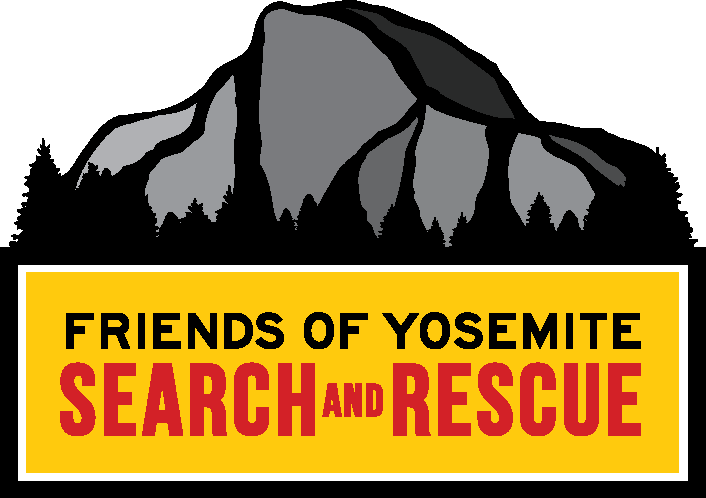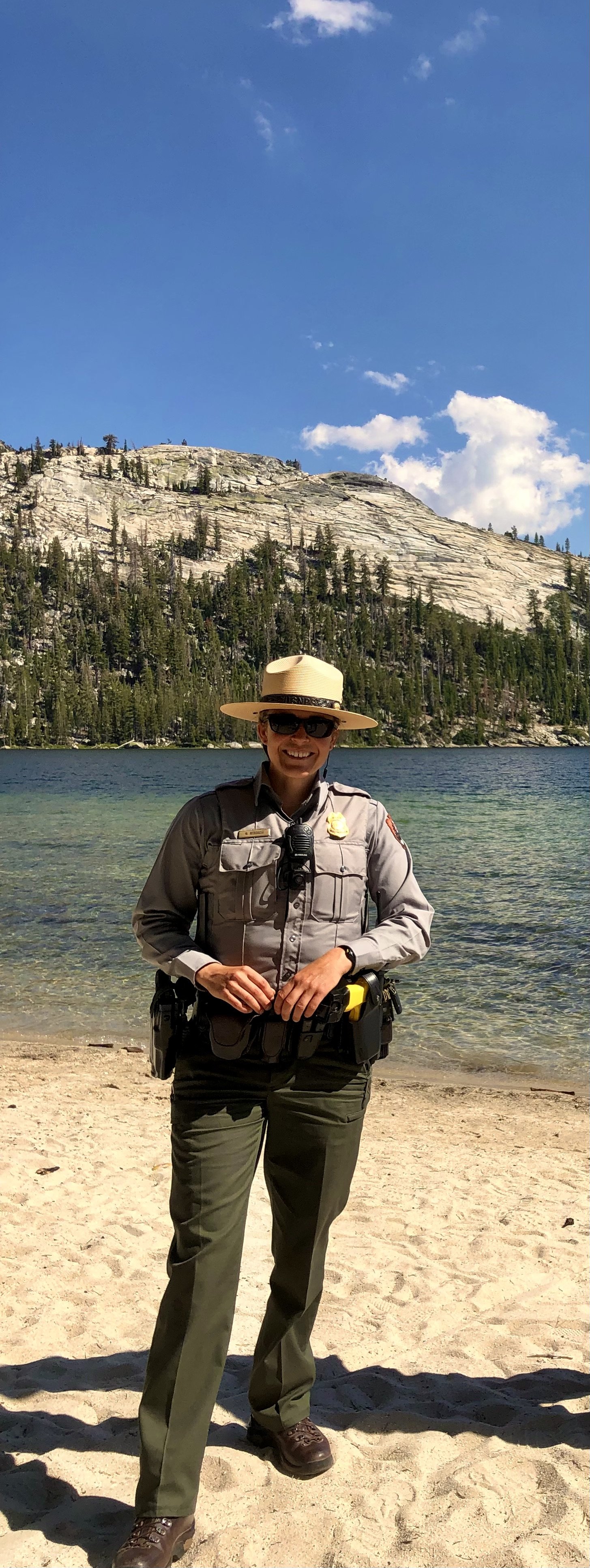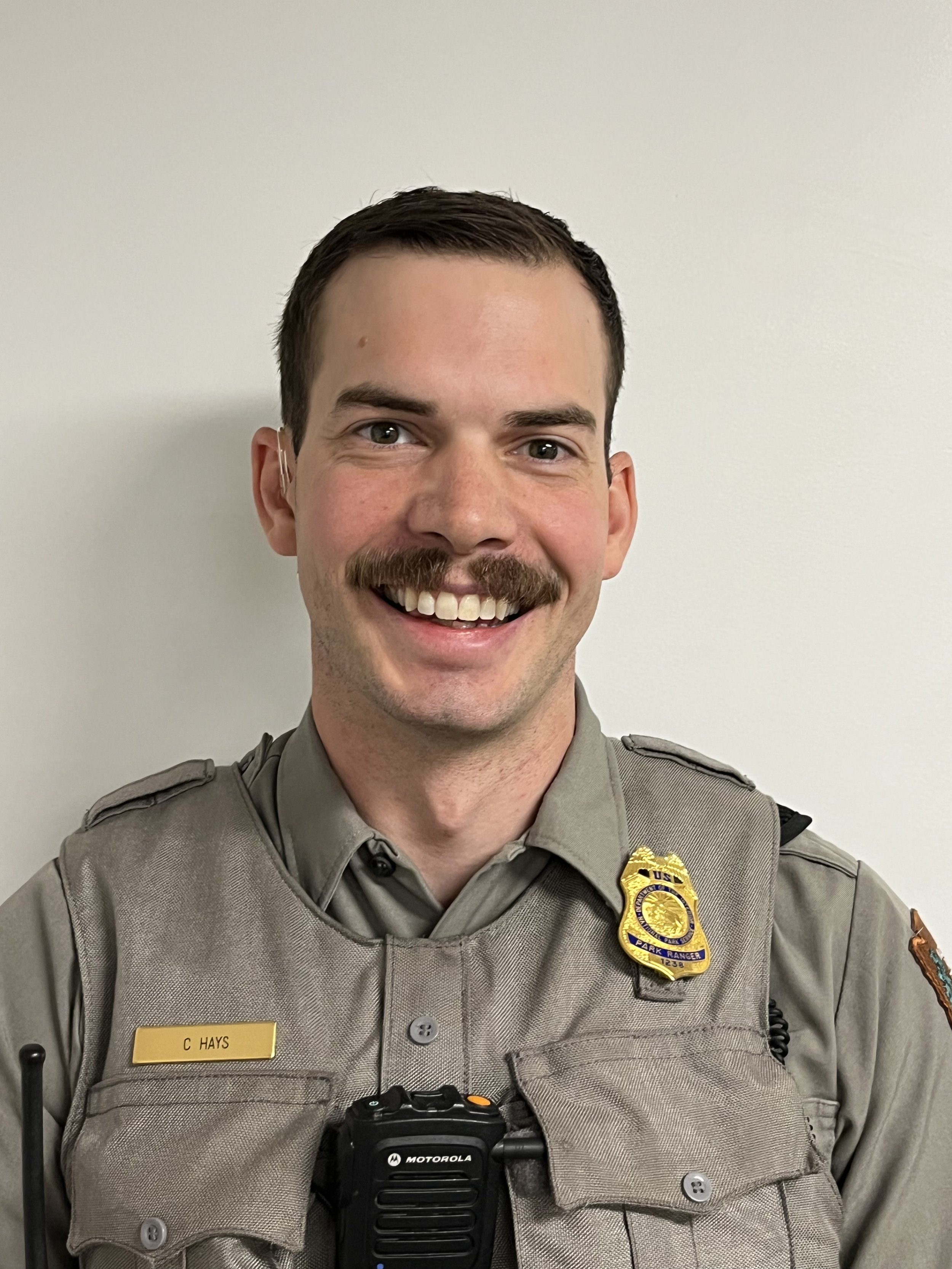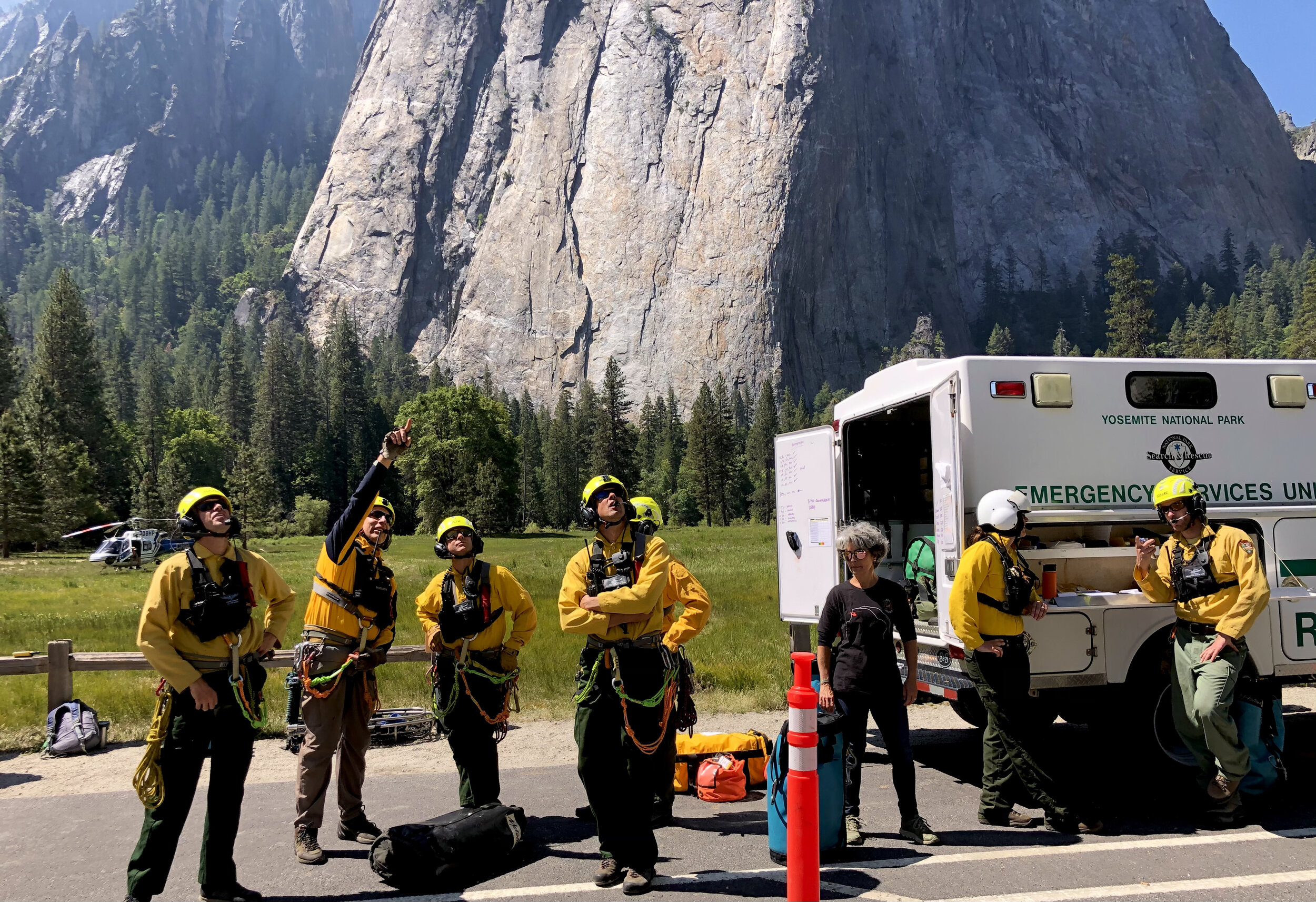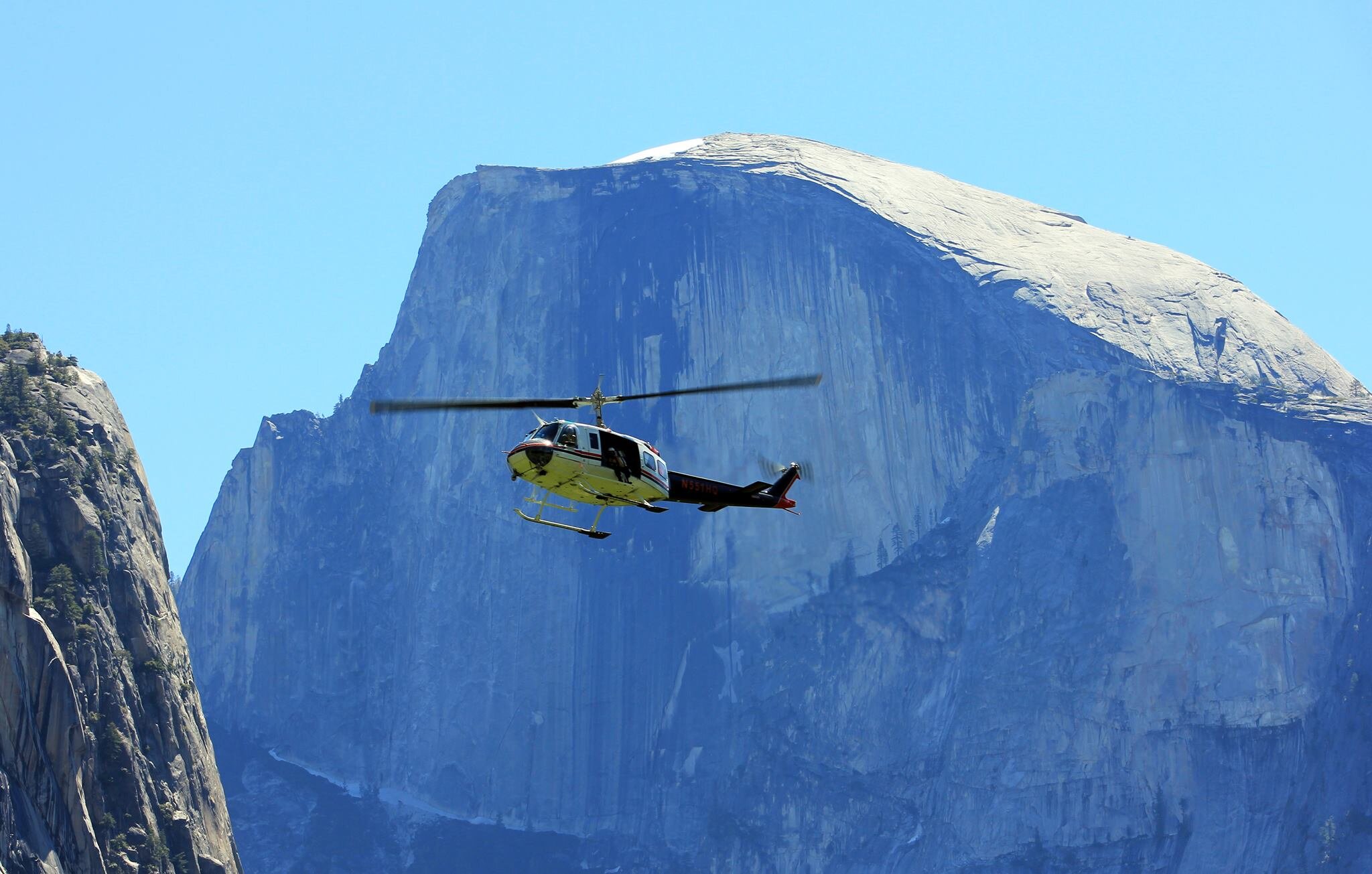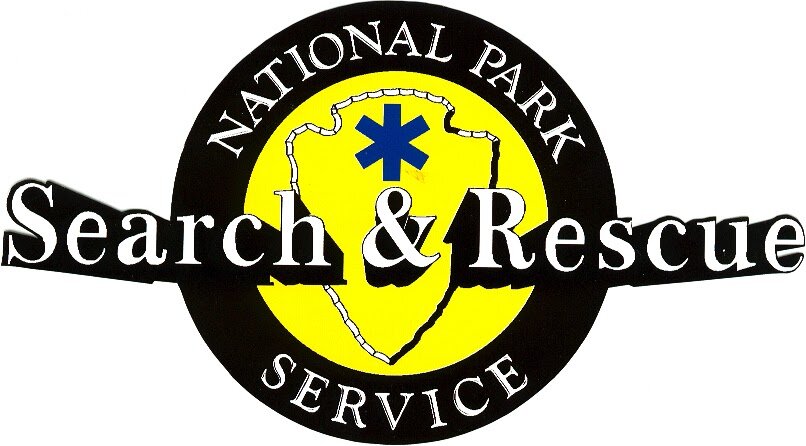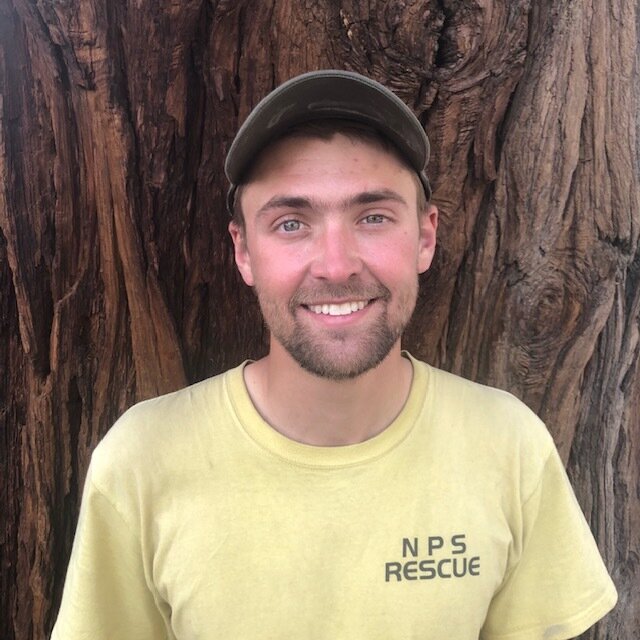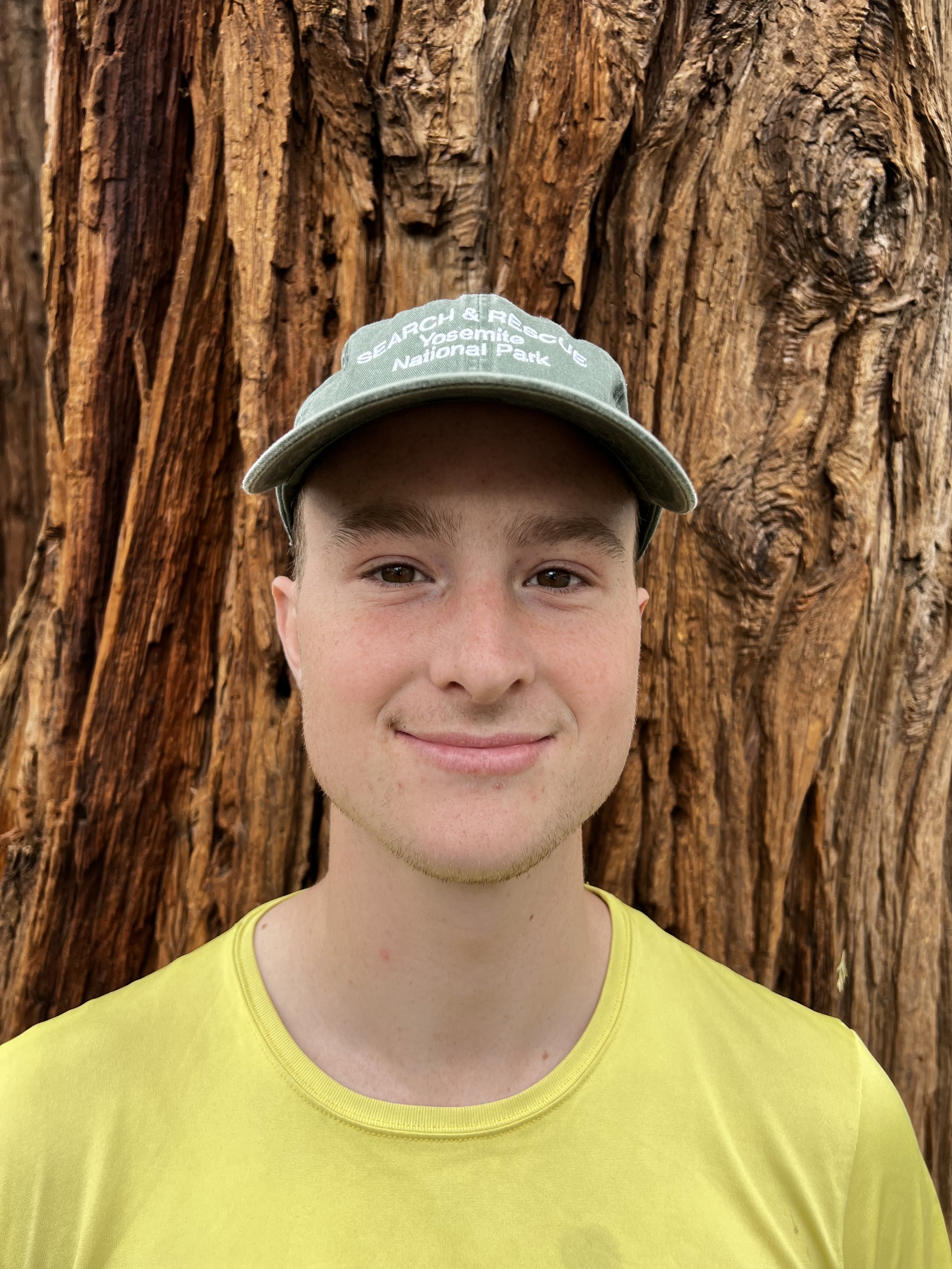Yosemite National Park SAR Employees
Jesse McGahey, SAR Director
John Dill, SAR Tech Extraordinaire
Sara Robinson
Tuolumne District Ranger and SAR Coordinator
TBD
Valley District Ranger and HRT Team
Nick Sullens
Valley SAR Coordinator
Cody Hays
Valley SAR Coordinator
Support Staff ~ Visitor and Resource Protection Staff
Many of our Rangers (LE, EMS, Climbing) have chosen to work with SAR. They have been trained in swift-water, short haul, technical climbing and hoist trainings with our Helicopter Team.
Helicopter Rescue Team (HRT)
Team Members:
Aaron Smith
Jesse McGahey
Cameron King
Nick Sullens
Cody Hays
Sara Robinson
Tim Knaus
Janna Drew
Zach McComb
Kyle Smith
Hidekatsu Kajitani (Kaji)
Michelle Pellette
Tom Healy
Heather Wonenberg
Piilots (2 - Interchangeable)
Seasonal Volunteer SAR Teams
Yosemite Search and Rescue (YOSAR) is the emergency response team for Yosemite National Park, where each year an average of 200 visitors are lost, injured or die in the rugged environment. Rescues have a long standing history in Yosemite, dating back to the park's establishment in 1890. Today the YOSAR response team is composed of Park Rangers and SARsite seasonal volunteer members, who work closely with the park rangers and Preventative Search and Rescue (PSAR) program to ensure visitor safety.
The SARsite was established in Camp-4 during the 1960s to respond to the increasing high-angle emergencies with a volunteer group of highly experienced climbers living in the park.
As a result of its beginnings and subsequent history, YOSAR is structurally different from other SAR teams. Yet, in most of its specialties – big wall rescue, swift water rescue, emergency medicine, helicopter rescue, canine search – YOSAR ranks among the best teams in the world.
Yosemite Valley Team
Tuolumne Meadows Team
Preventive Search and Rescue (PSAR)
In Yosemite, the PSAR and SAR programs work toward a shared goal of keeping people safe, but fill different niches. PSAR is proactive; SAR is reactive. PSAR aims to prevent incidents by educating visitors; SAR responds when incidents occur.
PSAR achieves its goal through trail patrols, educational signs, audio messages played on shuttle buses, and one-on-one interactions with visitors to preempt or change risky behaviors. Ideally, effective PSAR activities mean less work for the SAR team.
YODOGs
The Yosemite National Park Search and Rescue Team (“YOSAR”) uses search dog teams as part of the Yosemite’s SAR emergency service. Nicknamed “YODOGS,” the group is made up of State certified dog handlers that respond to the Park and assist with search and rescue operations with their canine partners. The Park has used this specialized canine resource since 1999 when it was recognized that there was a need for a group of experienced Canine search dog handlers that had strong backcountry search skills, knowledge of the Park, and who were able to operate in the Park’s remote environment with minimal support for several days. The members of YODOGS are certified in accordance with the State of California’s Office of Emergency Services Type 1, Canine Backcountry Search standard. This is typically done via one of the state’s canine search associations (CARDA, WOOF or Monterey Bay).
Backcountry canine search dog teams can typically search large areas and are able to operate in most weather conditions with minimal support. The use of back country canine search teams in conjunction with other types of resources, such as air and ground teams, allows YOSAR to maximize the chances of finding lost and missing individuals as quickly and as efficiently as possible. The dogs that make up YODOGS are of many breeds, but they all share some common traits: They like people and they particularly like to find people. They are trained to ignore wildlife and are comfortable working around visitors.
In order to search their assigned areas the dogs need to be able to keep moving off-trail for many miles per day, multiple days at a time. Their agility must be excellent as they are often called on to search talus fields and other difficult areas. The dog teams are sometimes transported via helicopter into remote areas and are used to being rappelled or belayed with their handlers into or out of otherwise inaccessible areas. Handlers also have criteria they must meet, including fitness requirements, medical training, and a resume of backcountry search experience. YODOG handlers are "casual hires" by the Department of the Interior (DOI) similar to other YOSAR members or Firefighters. They are hired only for specific searches. All YODOG handlers train with their home team, typically several times a week, to keep their and their dog’s skills sharp. It typically takes 2-3 years of training, 5-10 hours a week to be able to pass the certification tests. Costs associated with maintenance and training (i.e., dog food, vet bills, search equipment and all other expenses) are borne by the handler.
YOSAR has Dog Teams trained in certain disciplines: Trailing, Area Search (Wilderness) and Human Remains Detection. Trailing dogs follow a person’s scent from the point where he or she was last seen. Area search dogs, instead of following a specific scent trail as trailing dogs do, are assigned to a defined area with their handlers and the dogs’ job is to find every person in the area.
Some visitors to Yosemite may be surprised to see dogs working in the backcountry as dogs are not generally allowed away from designated areas. YOSAR, like most other agencies, has discovered that utilizing a combination of canines along with other resources is the most efficient way of locating lost or injured visitors, as using the proper mix of tools ensures a better outcome for a lost visitor.
If you see a YODOG with a handler, please say hello and ask about YODOGs. If they are not working, they would be happy to introduce you to their dog and the dog would be happy to meet you!
